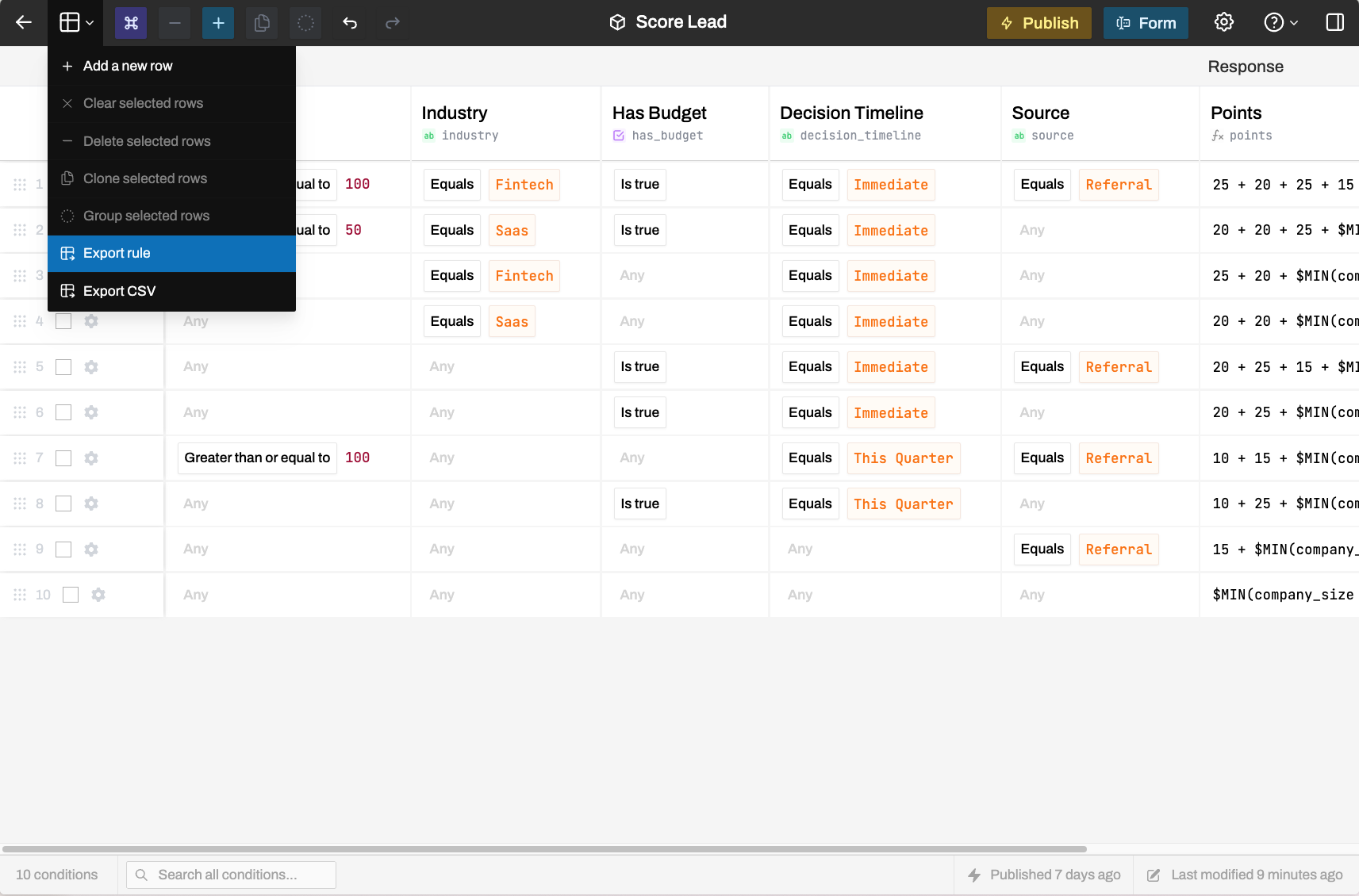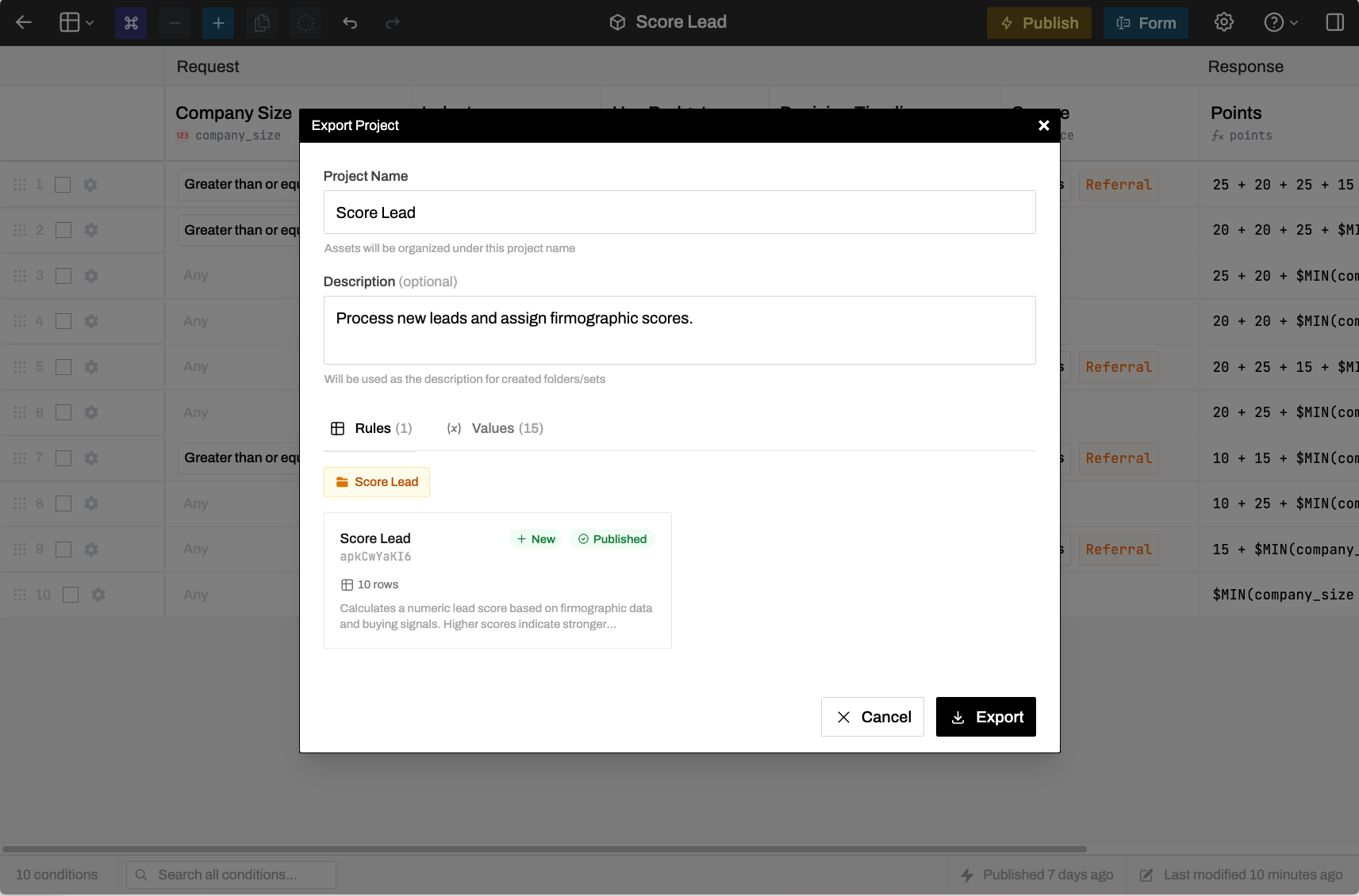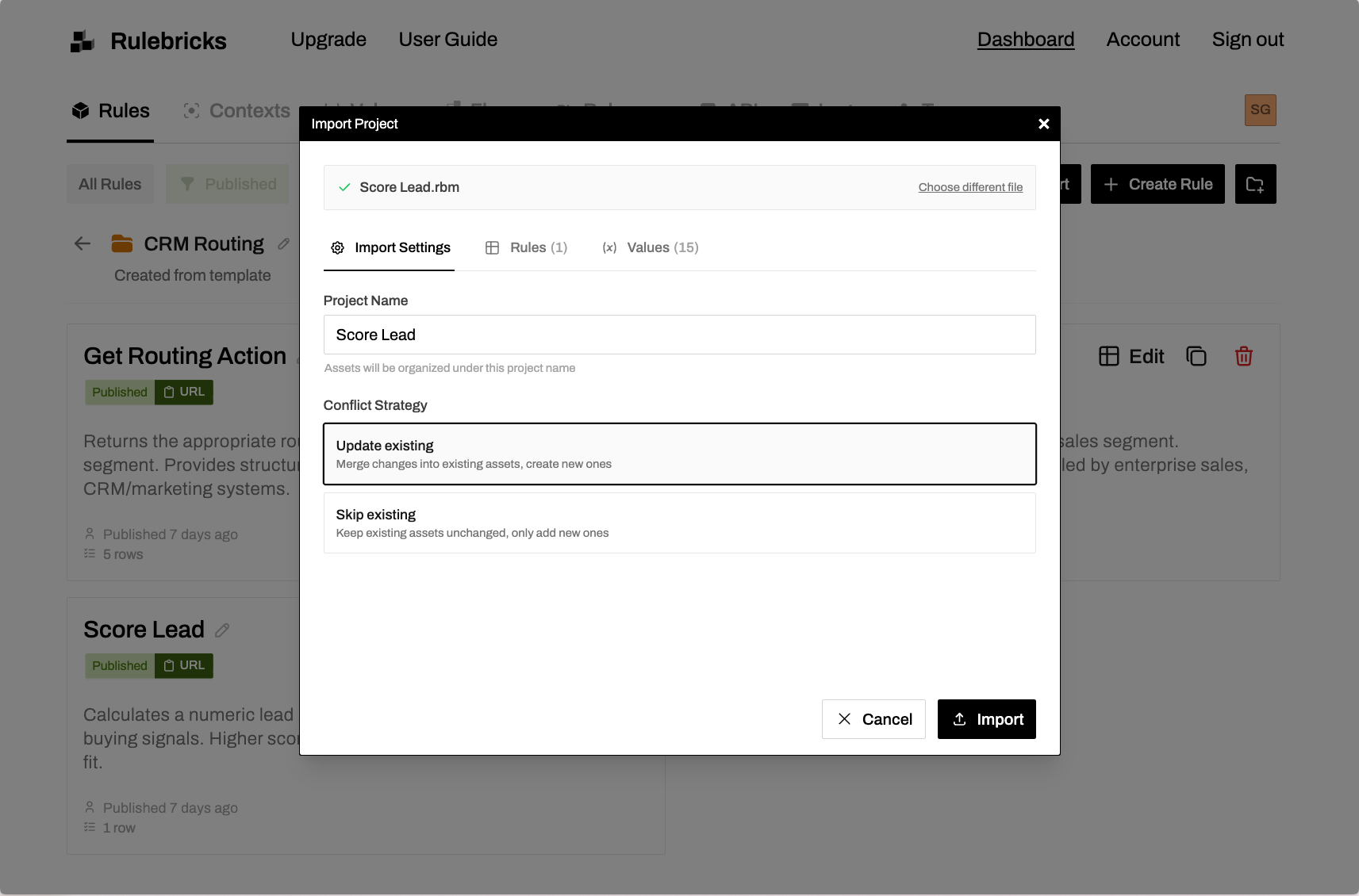Exporting Rules & Flows
Export rules and flows as .rbm files to back them up, share them across workspaces, or store them in version control.
Exporting
Open the rule or flow
Navigate to the asset you want to export.
Click Export

Name your export

Review dependencies
Exports intelligently bundle all assets related to the item you're exporting. Exporting Flows also exports the rules within. Exporting rules also exports any values those rules reference.
This ensures you won't have to think about dependencies while moving around assets- all relevant data is self-contained within a single file.

Download
Click Export to download the .rbm file.
Importing
Click Create → Import in the dashboard and upload an .rbm file.
We offer two conflict resolution schemes, that help address what happens if you're pulling in data you might already have a local copy of.

What's Included
- Rules export with all conditions, results, schema, referenced dynamic values, settings, test cases, and publication histories.
- Flows export the complete flow definition plus all embedded rules.
We do not obfuscate our schemas in exported files and encourage users to review how their assets are stored. RBM files are stored as large amounts of JSON, but they are structured in a way your team may be able to build custom tools directly against them!